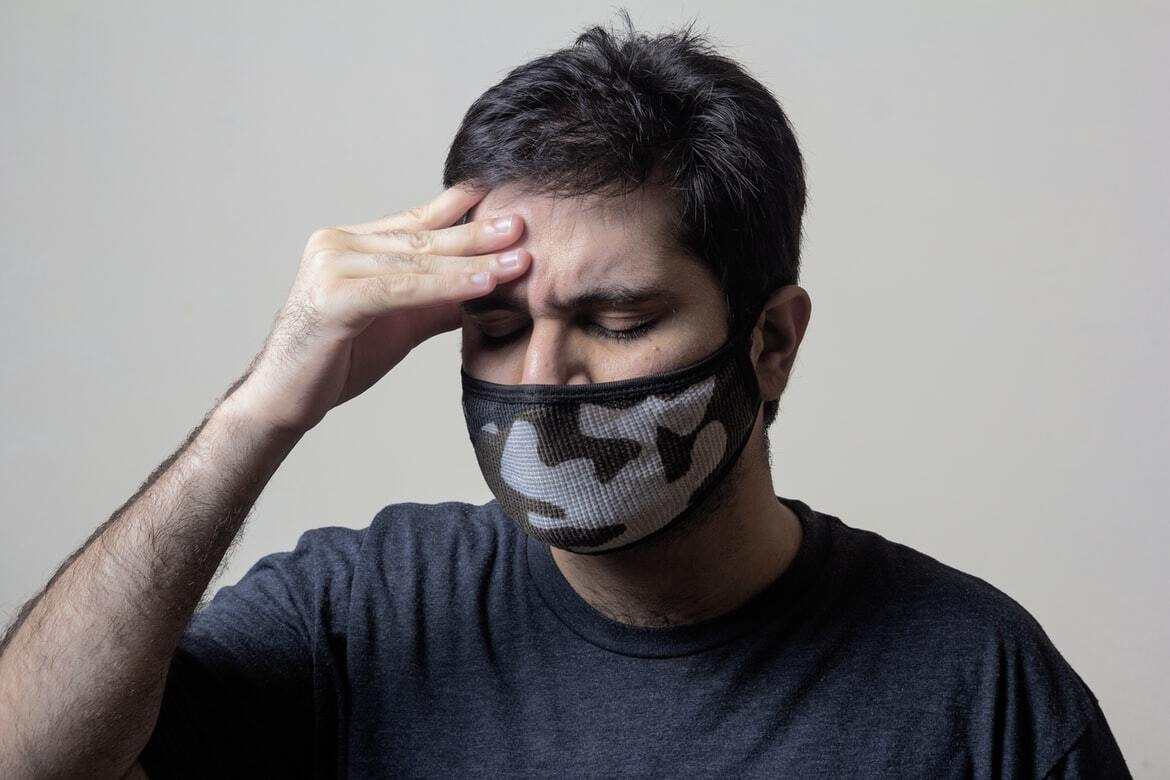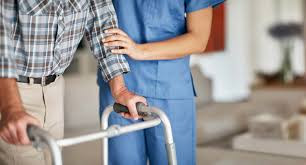Definisi
Kompresi medula spinalis akut merupakan gejala yang disebabkan oleh penekanan atau desakan pada arteri, vena, atau rongga di sekitar sumsum tulang, yang disebut dengan medula spinalis. Kondisi kompresi medula spinalis akut merupakan kondisi yang berbahaya, dapat terjadi pada hampir seluruh kelompok usia, dan memiliki morbiditas yang tinggi. Tergantung pada titik lokasi penekanan, dampak yang memengaruhi tubuh akan bervariasi.
Penyebab
Penekanan atau kompresi pada sumsum tulang dapat disebabkan oleh banyak hal, mulai dari patah tulang belakang, infeksi, hingga kanker yang menyebar. Pada kompresi medula spinalis akut, penekanan tersebut terjadi secara tiba-tiba dan menyebabkan gejala yang lebih berat.
Sistem saraf pusat (SSP) terdiri dari dua organ, yaitu otak dan sumsum tulang belakang atau medula spinalis. Sumsum tulang belakang merupakan serabut saraf yang dilindungi oleh tulang belakang. Serabut saraf tersebut berasal dari area kepala dan berakhir di panggul, kemudian bercabang ke berbagai daerah di tubuh. Serabut saraf ini memiliki fungsi untuk menyampaikan pesan dari otak ke seluruh tubuh untuk mengatur pergerakan, sensasi, dan fungsi-fungsi otonom (fungsi tubuh yang involunter atau tidak sadar). Sumsum tulang belakang dibagi menjadi tiga area utama yaitu daerah leher (servikal), daerah dada (torakal), dan daerah panggul (lumbar).
Apabila terjadi sesuatu yang menekan sumsum tulang belakang, baik disebabkan oleh trauma maupun non-trauma, fungsi pengaturan sensasi, pergerakan, dan aktivitas otonom tubuh akan terganggu. Gangguan fungsi akan sangat dipengaruhi oleh lokasi kerusakan. Kerusakan yang terjadi di daerah dada (torakal) dan panggul (lumbar) akan memengaruhi daerah dada, kaki, perut, kontrol kandung kemih, dan fungsi seksual; sedangkan kerusakan pada daerah leher (servikal) akan memengaruhi area leher, pergerakan tangan, dan pada kondisi yang lebih berat dapat mengganggu jalan napas.
Hal-hal yang dapat menyebabkan penekanan atau kompresi pada sumsum tulang belakang, antara lain:
- Trauma - Kecelakaan lalu lintas, jatuh, kekerasan, dan kecelakaan olahraga dapat menyebabkan patah tulang belakang dan menekan sumsum tulang.
- Keganasan - Keganasan umumnya terjadi di daerah torakal (60%), lumbosakral (30%) dan servikal (10%). Sekitar 85% dari keganasan sumsum tulang berasal dari kanker yang berawal di organ lain atau hasil dari metastasis. Tumor tersebut akan tumbuh di sekitar sumsum tulang dan seiring dengan pertumbuhannya, akan menekan sumsum tulang, saraf percabangannya, serta pembuluh darah dari sumsum tulang. Hal ini dapat menyebabkan kematian jaringan.
- Infeksi - Infeksi yang sering menyebabkan penekanan pada sumsum tulang belakang adalah diskitis, tuberkulosis (Pott's disease), dan abses epidural. Infeksi yang terjadi di sekitar sumsum tulang dapat membentuk abses dan menekan sumsum tulang. Infeksi ini disebabkan oleh bakteri Streptococcus, Pseudomonas, E. coli, dan Mycobacterium tuberculosis.
- Perdarahan - Kumpulan darah (hematom) yang berada di sekitar sumsum tulang belakang dapat menyebabkan penekanan pada sumsum tulang.
Faktor Risiko
Faktor yang dapat meningkatkan risiko terjadinya kompresi medula spinalis akut, antara lain adalah:
- Laki-laki - Kecelakaan lebih sering terjadi pada laki-laki. Di Amerika Serikat, hanya 20% kasus kompresi medula spinalis akibat kecelakaan dialami oleh perempuan.
- Usia 16–30 tahun
- Usia di atas 65 tahun - Peningkatan insidensi kompresi medula spinalis akut terjadi pada lansia, akibat tingginya kejadian jatuh.
- Riwayat keganasan - Keganasan payudara, prostat, ginjal, dan paru memiliki risiko metastasis sehingga dan menyeababkan kompresi akut
- Osteoporosis - Penyakit ini dapat meningkatkan risiko fraktur atau patah tulang yang berpotensi menekan sumsum tulang belakang
- Penggunaan obat-obatan intravena
- Imunosupresi
Gejala
Gejala yang dapat dialami akan bergantung pada lokasi penekanan medula spinalis. Gejala yang dapat muncul antara lain:
- Nyeri yang dipicu oleh pergerakan area punggung
- Tidak dapat menggerakkan kaki atau tangan (lumpuh) secara mendadak
- Hilang atau berkurangnya sensasi raba, panas, dingin, dan sentuhan secara mendadak
- Tidak dapat menahan buang air kecil (mengompol)
- Menurunnya fungsi seksual
- Pada kondisi yang lebih berat, dapat terjadi kelumpuhan tiba-tiba yang disertai dengan kesulitan bernafas, batuk, atau mengeluarkan dahak dari tenggorokan
- Demam, nyeri punggung, dan kelemahan mendadak dengan riwayat infeksi mungkin disebabkan oleh abses epidural
- Penurunan berat badan hebat dalam kurun waktu dekat
Tanda bahaya dari gangguan sumsum tulang belakang setelah terjadinya trauma atau kecelakaan, antara lain:
- Nyeri hebat pada punggung, leher, atau kepala
- Kelemahan pada tangan, kaki, hingga seluruh tubuh
- Rasa baal atau sensasi tertusuk-tusuk
- Tidak dapat menahan buang air kecil atau buang air besar
- Tidak dapat berjalan, posisi tubuh tidak seimbang, dan kaki terasa lemah
- Sulit bernapas
Diagnosis
Diagnosis dapat ditegakkan secara klinis. Dokter Anda akan menanyakan mengenai riwayat perjalanan penyakit Anda dan gejala terkait, riwayat penyakit sebelumnya, riwayat trauma, dan riwayat pengobatan.
Pemeriksaan penunjang yang umumnya dilakukan adalah pemeriksaan MRI. Dengan MRI, Dokter Anda dapat melihat kondisi sumsum tulang belakang Anda secara lebih detil. Pencitraan lain yang dapat digunakan adalah CT scan, jika dibutuhkan pada kondisi cepat atau MRI tidak tersedia. Pemeriksaan lain yang dapat dilakukan jika dicurigai ada infeksi adalah pemeriksaan darah lengkap dan kultur darah. Pemeriksaan pungsi lumbal jarang menjadi pilihan pemeriksaan utama.
Tata Laksana
Tujuan dari tata laksana kompresi medula spinalis akut adalah untuk meredakan tekanan pada sumsum tulang. Hal ini dapat dilakukan dengan pembedahan atau obat-obatan, tergantung pada penyebab dasar penyakit dan kondisi saat ini.
- Pada kompresi yang disebabkan oleh keganasan, dokter Anda akan memberikan obat untuk meredakan peradangan (antiinflamasi) selama 10 hari
- Pada kompresi yang disebabkan oleh infeksi, dokter Anda akan membersihkan abses atau massa infeksi tersebut melalui pembedahan. Metode terapi melalui pembedahan dikatakan lebih efektif bila dibandingkan dengan terapi antibiotik saja
- Pengobatan dengan antibiotik saja dapat dilakukan jika tidak ditemukan adanya kondisi berat pada pasien, seperti gejala kelumpuhan dan hilangnya sensasi saraf
Komplikasi
Kompresi medula spinalis akut dapat menyebabkan kelumpuhan total, gangguan saraf menetap, dan penyakit lain yang disebabkan oleh posisi berbaring dalam jangka waktu lama, seperti ulkus dekubitus, DVT (Deep Vein Thrombosis), emboli paru, dan infeksi saluran kemih. Komplikasi operasi pada kompresi medula spinalis akut akibat keganasan terjadi sekitar 25%, sedangkan komplikasi yang dapat terjadi setelah pembedahan pada abses epidural antara lain adalah perubahan bentuk tulang belakang menjadi lebih bungkuk (kifosis) dan gangguan saraf berkelanjutan.
Kelumpuhan total ditemukan pada 4–22% pasien dengan kompresi medula spinalis akut, terutama jika kelumpuhan terjadi lebih dari 24 jam sebelum pembedahan. Sekitar 5% orang dengan abses epidural meninggal akibat sepsis (komplikasi infeksi yang menyebabkan gangguan sistem organ).
Pencegahan
Beberapa hal di bawah ini dapat menurunkan risiko terjadinya kompresi medula spinalis akut, antara lain:
- Berhati-hatilah ketika menyetir. Kecelakaan merupakan penyebab utama timbulnya gangguan pada tulang belakang. Berkendara dengan hati-hati dan gunakan sabuk pengaman ketika berkendara
- Hindari jatuh. Pastikan lantai rumah Anda tidak licin, bila ada orang tua yang rentan jatuh di rumah, Anda bisa memasang grip bar atau pegangan dinding di rumah atau di dalam kamar mand.
- Awasi kondisi kesehatan Anda dengan konsumsi obat-obatan yang sesuai anjuran dan petunjuk pemakaian dari tenaga kesehatan, terutama jika Anda mengalami infeksi kronis seperti tuberkulosis dan kondisi keganasan
Kapan Harus ke Dokter?
Jika Anda mengalami kecelakaan, jatuh, merasakan nyeri tiba-tiba pada punggung dengan riwayat infeksi atau kanker, segera periksakan diri Anda ke fasilitas kesehatan terdekat. Waktu antara munculnya gejala dan intervensi medis sangat memengaruhi kesembuhan dari pasien.
Jika Anda menemukan seseorang yang dicurigai mengalami trauma sumsum tulang belakang, lakukan hal-hal berikut.
- Jangan pindahkan orang tersebut hingga petugas kesehatan datang
- Segera cari bantuan
- Pastikan posisi leher pada posisi semula
- Berikan pertolongan pertama tanpa menggerakkan leher atau kepala
Mau tahu informasi seputar penyakit lainnya? Cek di sini, ya!
- dr Hanifa Rahma
Casey KF. (2017). Spinal cord compression. Best Practice BMJ. Available from: https://bestpractice.bmj.com/topics/en-us/1012
Ropper AE, Ropper AH. (2017). Acute spinal cord compression. N Engl J Med. Available from: https://www.nejm.org/doi/full/10.1056/NEJMra1516539
Singleton JM, Hefner M. Spinal Cord Compression. [Updated 2021 Feb 24]. In: StatPearls [Internet]. Treasure Island (FL): StatPearls Publishing; 2021 Jan-. Available from: https://www.ncbi.nlm.nih.gov/books/NBK557604/
Mayo Clinic Staff. (2020). Spinal cord injury. MayoClinic. Available from: https://www.mayoclinic.org/diseases-conditions/spinal-cord-injury/symptoms-causes/syc-20377890












